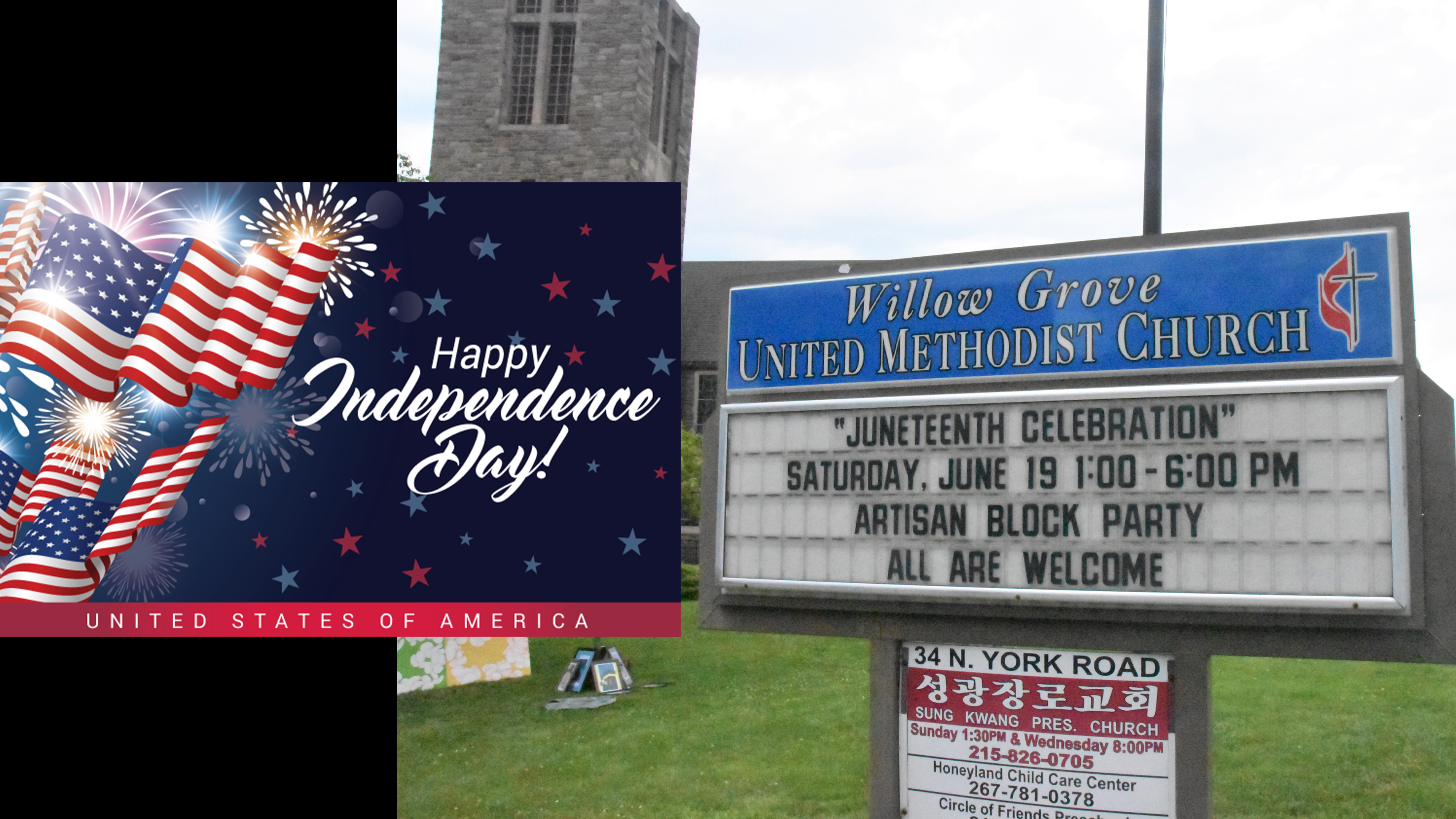
At a time when America’s freedom is endangered by efforts to restrict or even thwart voting rights for all, it may be timely for us to have two holidays to celebrate our nation’s freedom and independence—both actual and aspirational. July 4th ends a two-week, bookended period of equally important occasions that one might call our Freedom Days. It began with historic significance in our first celebration of Juneteenth, June 19, as a national holiday.
And now we celebrate this Independence Day six months after our nation’s democratic values came under a brutal attack that bewildered and dismayed many citizens. Un-civil insurrectionists stormed the U.S. Capitol and sought to abort the certification of our 2020 Presidential election outcome. Now one house of Congress is about to investigate what is still an evolving and disturbing drama that begs for more thorough analysis and remediation.
“Man is born free. Yet, everywhere he is in chains,” wrote Jean-Jacques Rousseau in The Social Contract. On July 4, 1776, the U.S. declared its independence from Great Britain. But for nearly 90 more years the chains of chattel slavery continued to rattle, chafe and imprison millions of African Americans. Admittedly, many still hear the harsh echoes of those chains and feel their biting sting even today.
Its own Declaration of Independence did not fully free this emerging nation until it signed the Treaty of Paris to end the Revolutionary War in 1783. But it allowed General George Washington to form a legal army of citizens.
Likewise, President Abraham Lincoln’s Emancipation Proclamation, approved by Congress on January 1, 1863, did not really emancipate the Confederate States’ slaves. But it did allow the Union Army to legally recruit and accept escaped slaves as soldiers, for they were no longer to be considered anyone’s property.
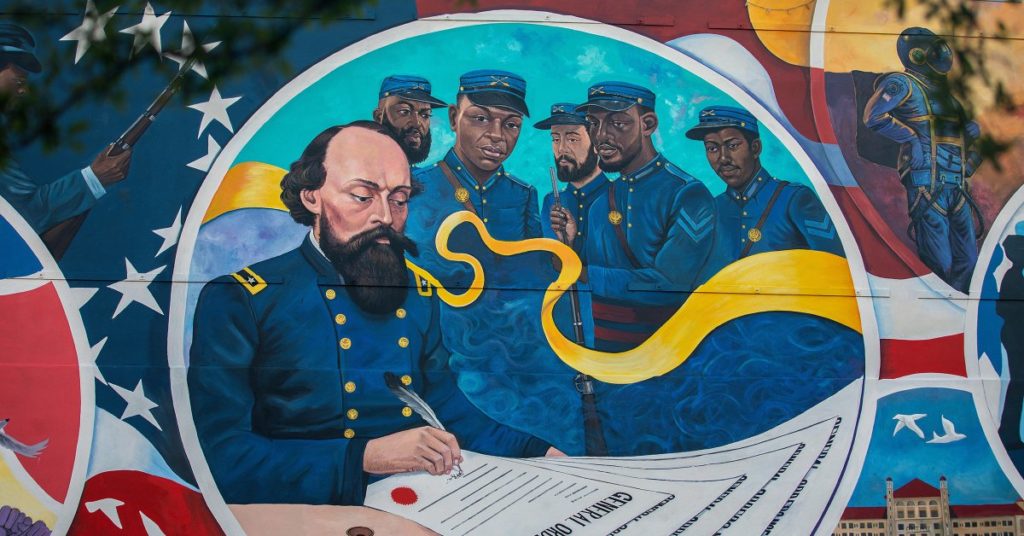
Indeed, when General Gordon Granger entered Galveston, Texas, on June 19, 1865, to tell the last remaining slaves there that they were free, his freedom orders were enforced by a full complement of African American U.S. soldiers who accompanied him. Many people don’t realize how much or for how long African Americans have been agents of their own liberation.
Years after slavery ended, the former Galveston slave Margrett Nillin was asked if she preferred slavery or freedom. She answered unequivocally, “Well, it is this way. In slavery I owned nothing. In freedom I owned a home and raised my family. Which all causes me to worry; and in slavery I has no worries. But I takes freedom.”
“But I takes freedom.” So what has long been known variously as Jubilee Day, Freedom Day, Liberation Day and Emancipation Day—first celebrated in Texas black church gatherings—is now, thanks to a Congressional voting majority and President Joe Biden’s signature, officially Juneteenth National Independence Day, to commemorate the end of slavery in our nation.
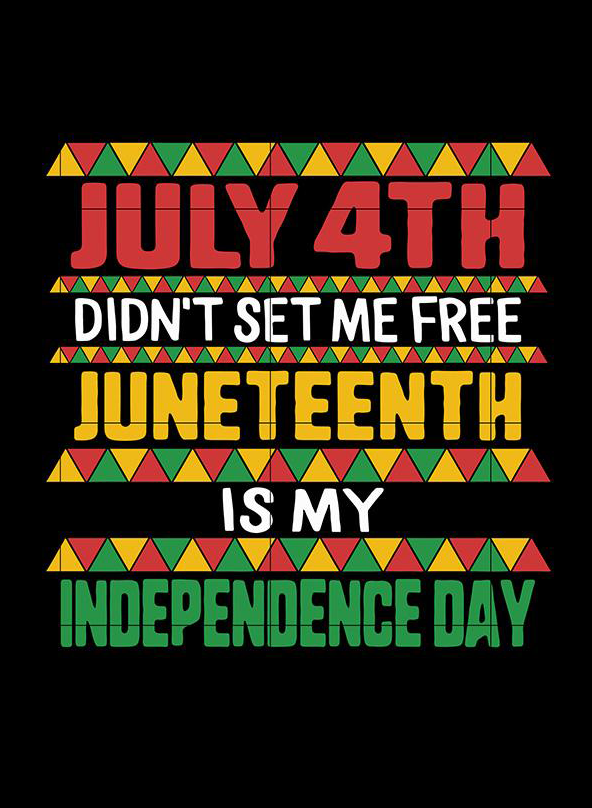
Oh, and thanks also to 94-year-old Texas activist Opal Lee and her four-decade struggle to bring this national holiday to pass. She was able to hold the hand of Kamala Harris, America’s first woman and first person of color to serve as Vice President, and to hear her describe the significance of Juneteenth at the White House before introducing the President.
When I search Google using the title of this essay—“Juneteenth and July 4th”—I find a plethora of poster and t-shirt images that read “July 4th didn’t set me free. Juneteenth is my independence day.” Now that we have two National Independence Days, I suppose new messages embracing both may join those images in the future.
Yes, a tale of two Independence Days… because we needed two to get it right. Sort of like Jesus touching the blind man’s eyes twice to fully heal him and restore his sight. (Mark 8:22-25)
And we’re still trying to get it right. Trying not to reverse the many, arduous steps forward with too many backward stumbles. Trying not to make America hate again, while many of its people are only now learning to truly love—especially to love “the other.”
“Justice is what love looks like in public,” says the Rev. Cornel West. And finally, we are learning to make love prevail by making it public.
I wanted to attend St. Daniel’s UMC’s 10th annual Juneteenth celebration in Chester. Instead I attended the first celebration in Willow Grove, hosted by Willow Grove UMC, in its first onsite gathering since the pandemic closed the church in 2020.
Sharia Wallace, a young African American neighbor of this predominantly white church, asked them to host it so that the town council would approve it, the Rev. Lorelei Toombs, pastor, told me. Wallace is an inspiring entrepreneur and community organizer. The church parking lot, lawn and adjacent streets overflowed with sheer joy, flavored by loud music, colors, food, vendors’ stands, and kinetic community life.
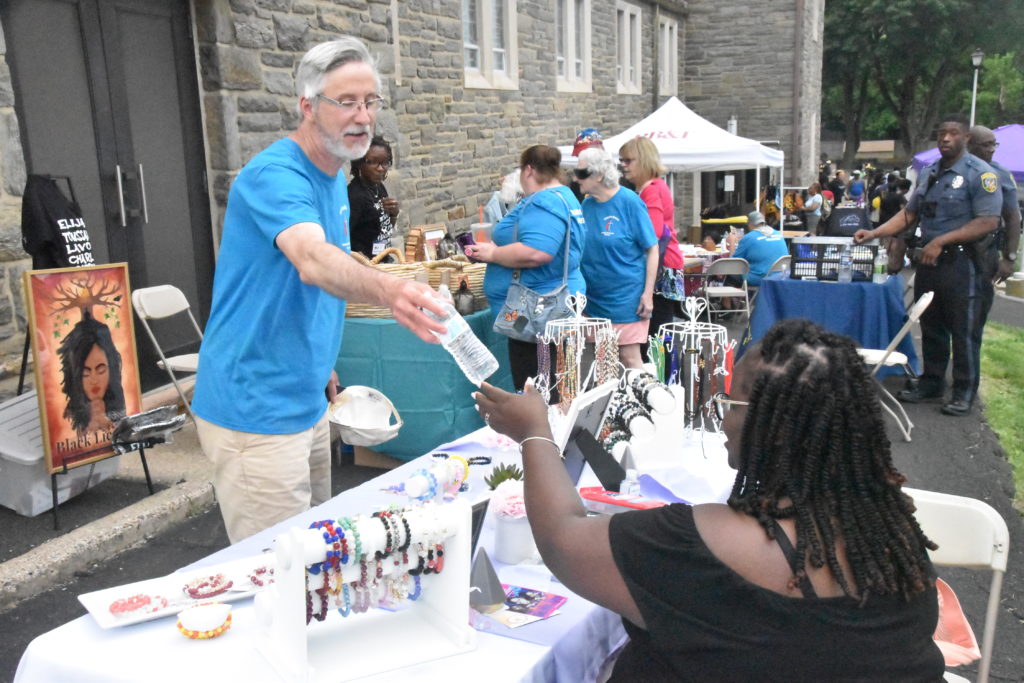
Speakers provided education about Juneteenth, its reason and legacy; and a high-schooler sang the historic anthem “Lift Ev’ry Voice and Sing.”
“I learned a lot about Juneteenth from those speeches and from talking to people here,” said Dave Kistner, one of many church volunteers who made this event a success. Learning is where the seeds of justice—of love—are sown. Not in fireworks, or barbecues or patriotic parades, flags and decorations, although all those July 4th traditions are worth enjoying.
In Let America Be America Again (1935) Harlem Renaissance poet Langston Hughes laments, “America never was America to me…. There’s never been equality for me, nor freedom in this ‘homeland of the free.’”
But he later pens these words of aspiration:
O, let my land be a land where Liberty
Is crowned with no false patriotic wreath…
O, let America be America again—
The land that never has been yet—
And yet must be—
The land where every man is free.
Hughes writes of many peoples’ sufferings, mostly from painful neglect and oppression, as they seek and strive for the American Dream to be fulfilled and made real in their lives. What may be absent from his poem is the struggle many have waged for that fulfillment, not alone but together.
Maybe we can aspire to make Juneteenth and July 4th—our two Independence Days—more like Interdependence Day. Maybe we can all seek “justice for all” –including voting rights—and strive to make love public…together.
In peaceful protest rallies and marches, together. In nonviolent acts of civil disobedience, together. In petitions and letter-writing campaigns and visits to government officials’ offices, together. In standing up for justice and equity—not alone, but…together, assuring those who suffer that they are not really alone.
On July 4th let us celebrate our collective Interdependence Day, and continue the nation-building progress that we started on Juneteenth… together.
More photos from Willow Grove UMC’s Juneteenth celebration:
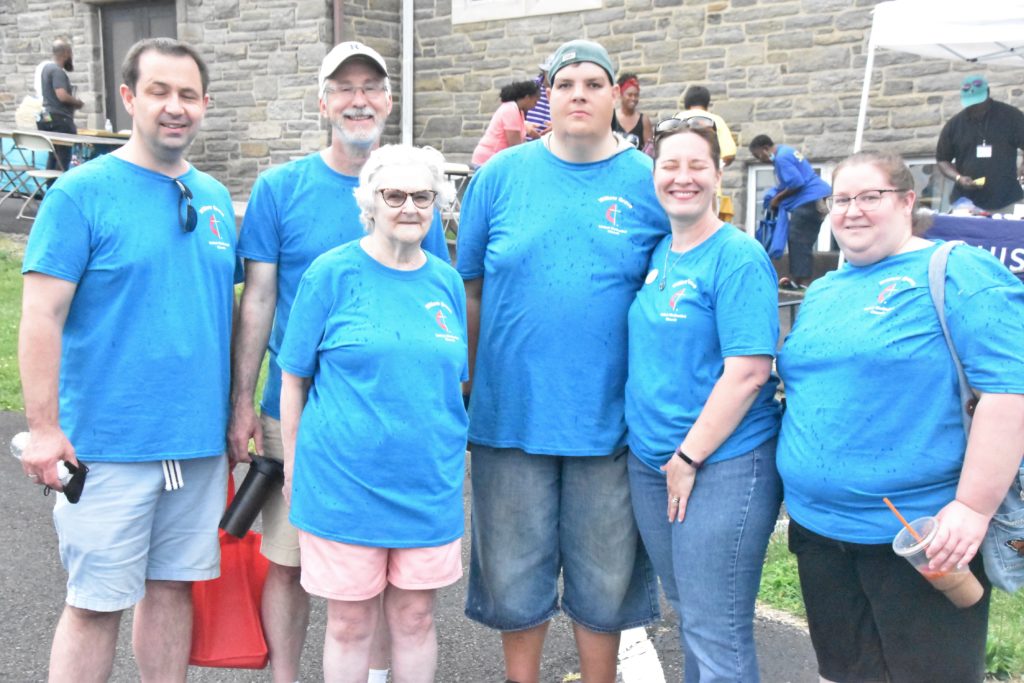
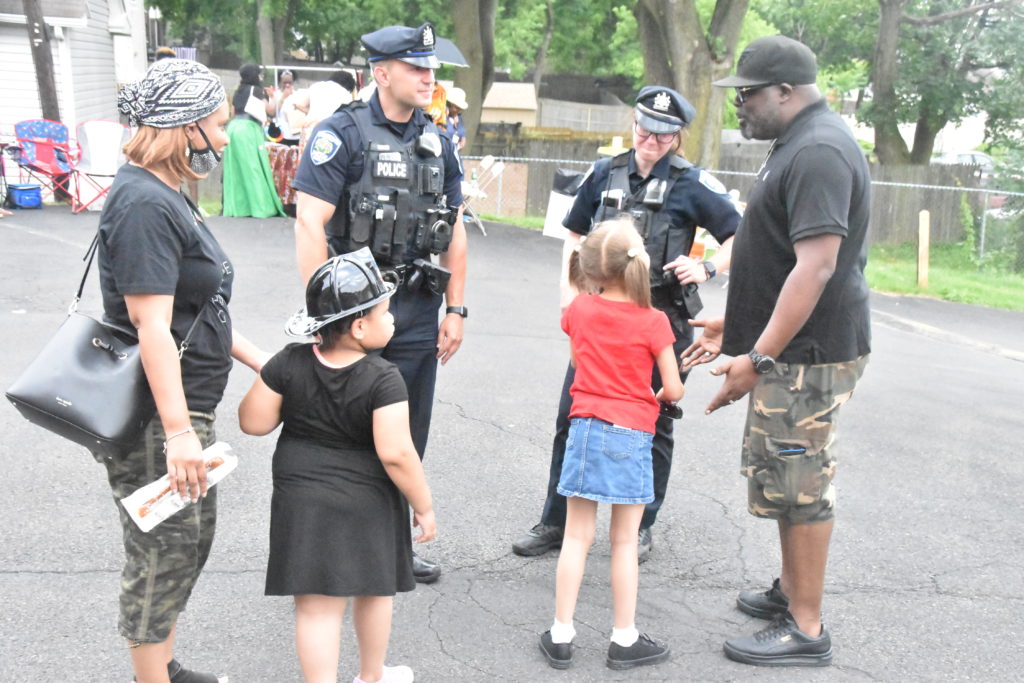
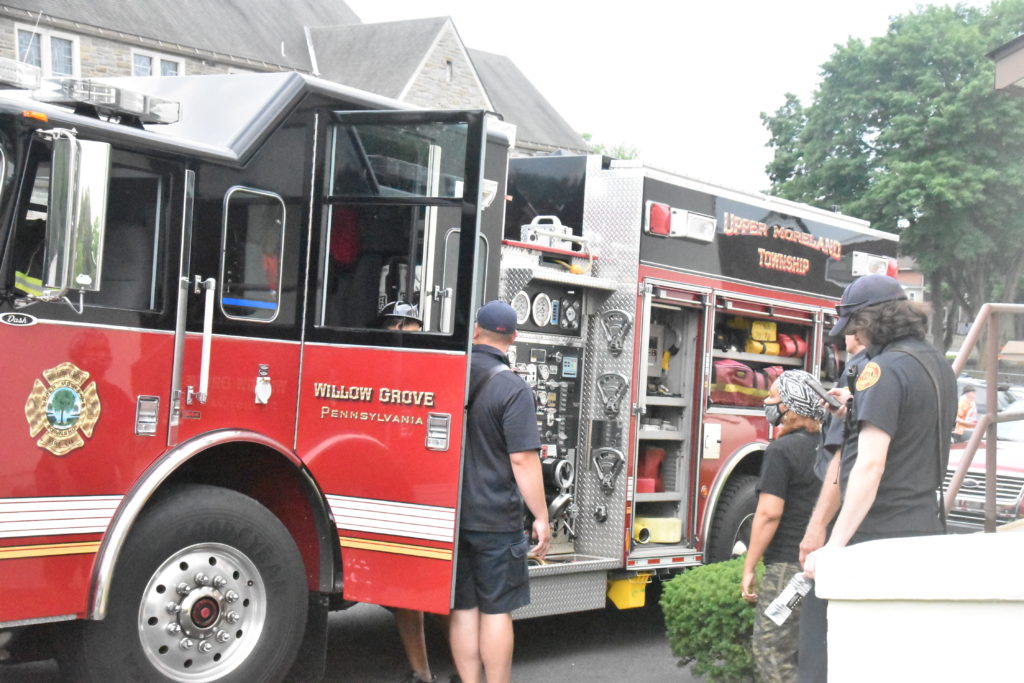
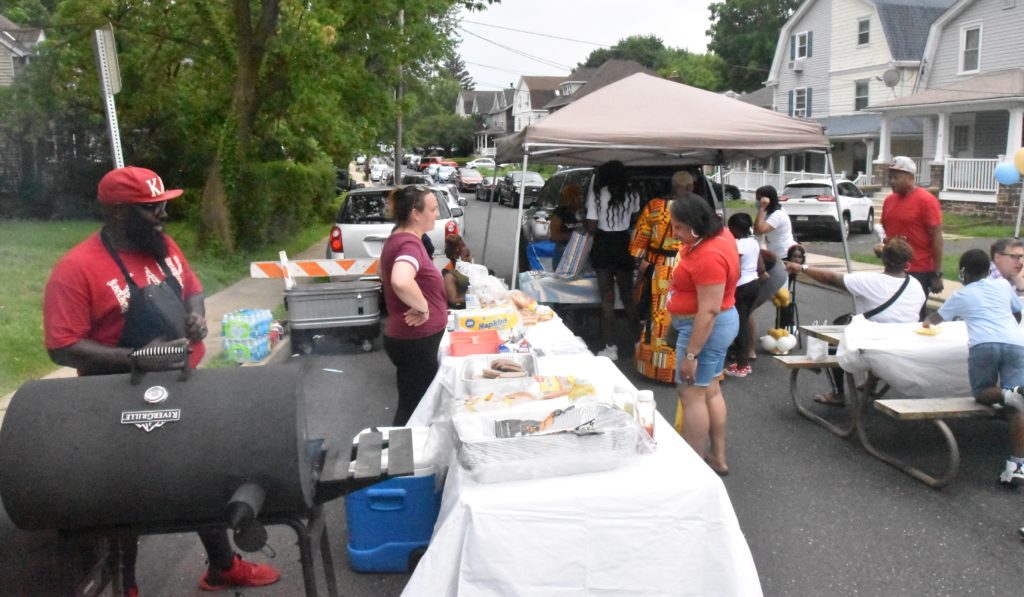
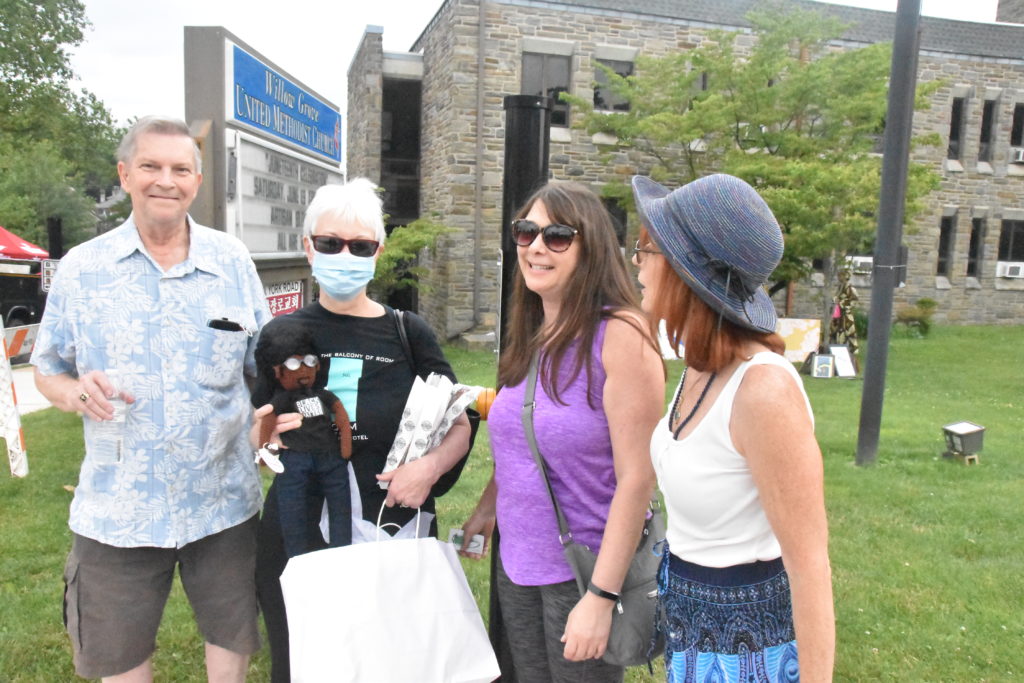
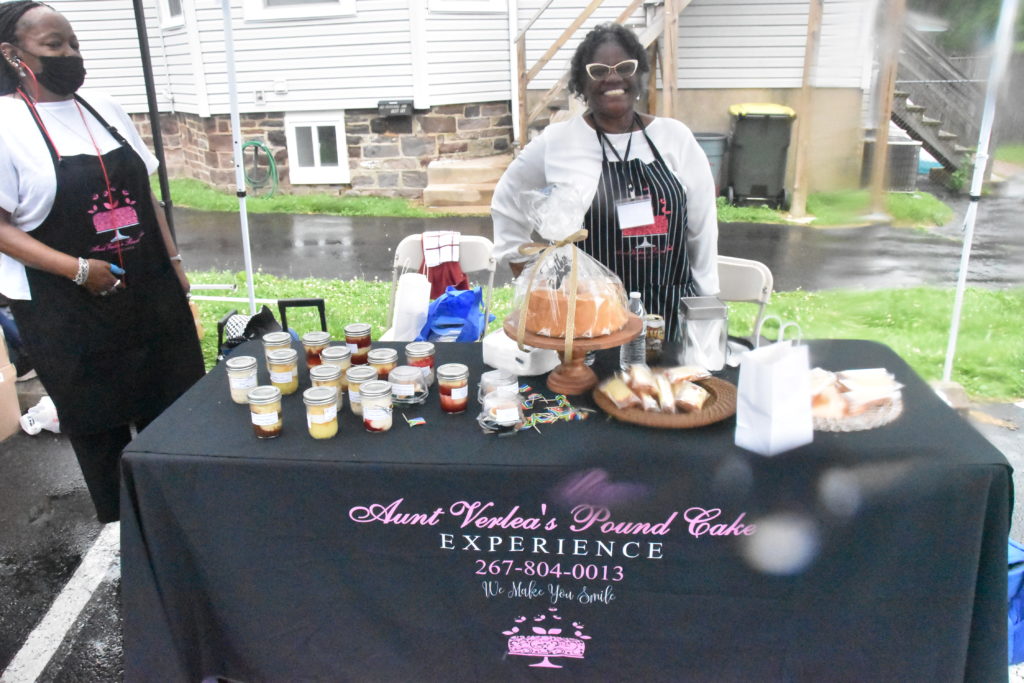
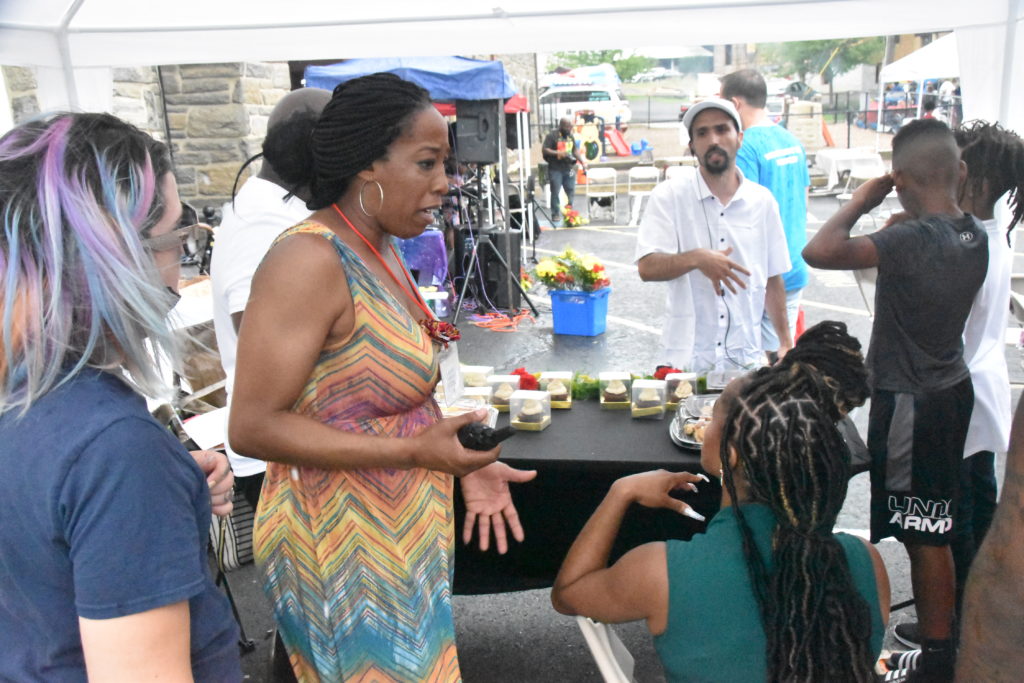
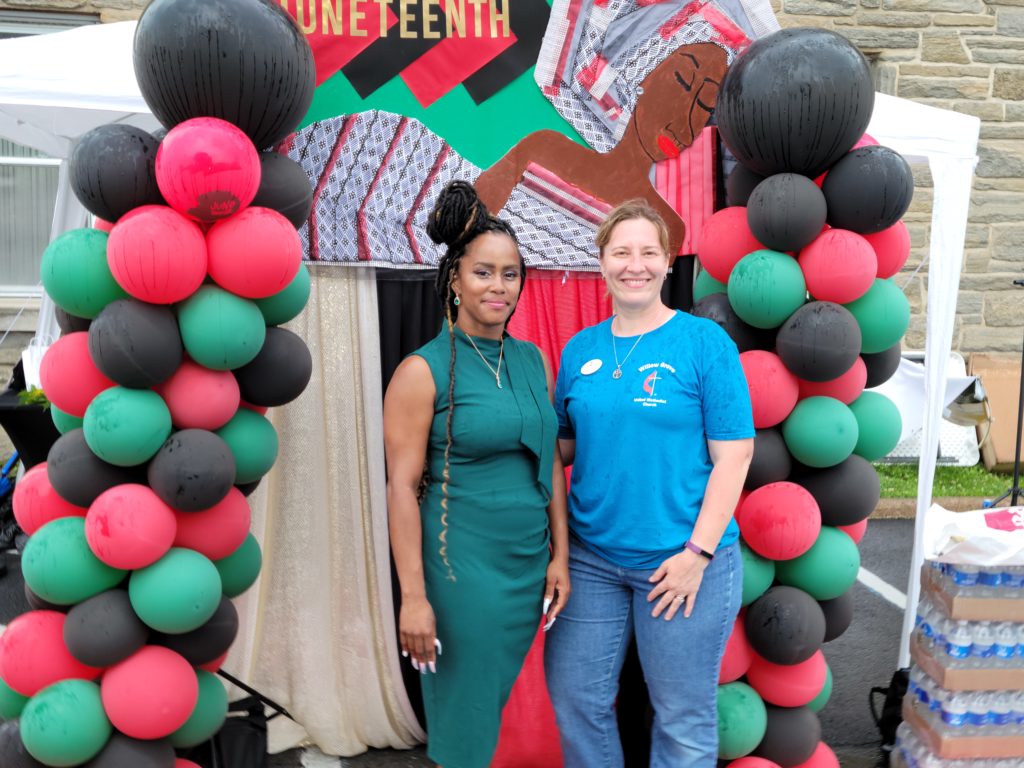
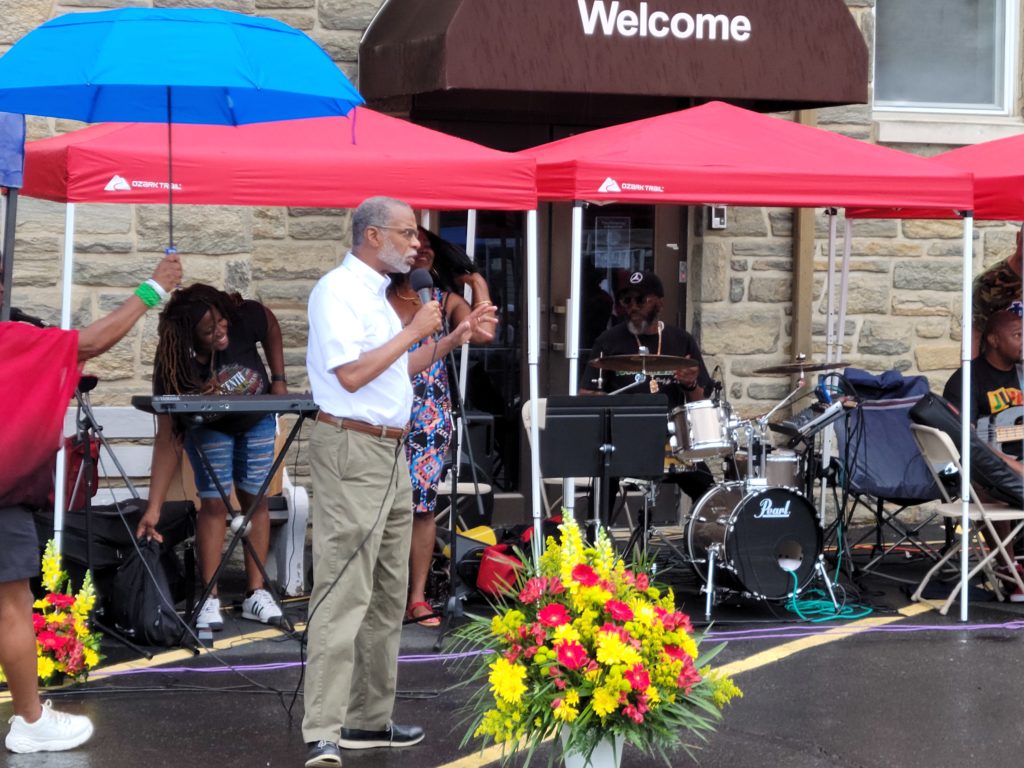
John Coleman photos.
